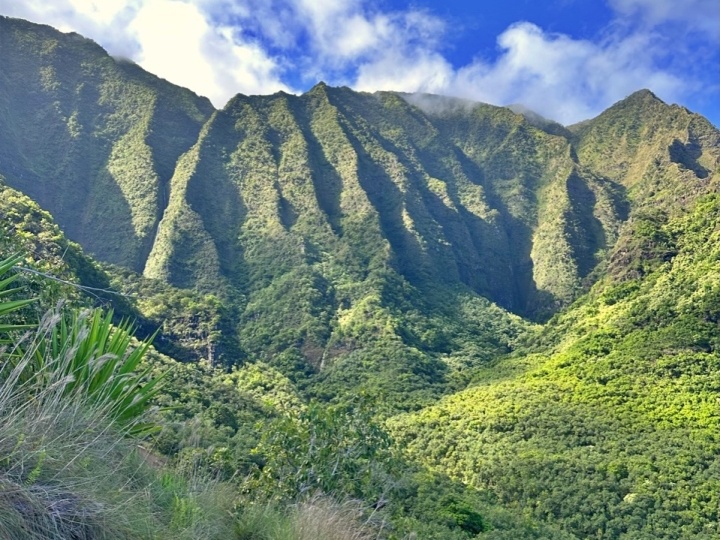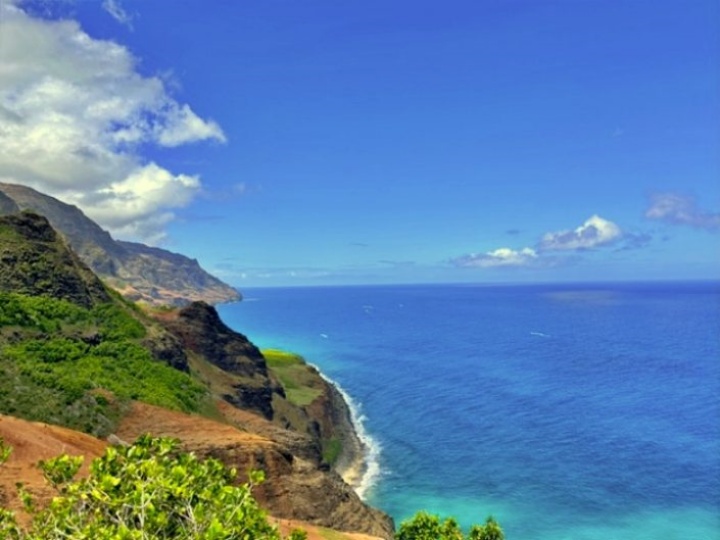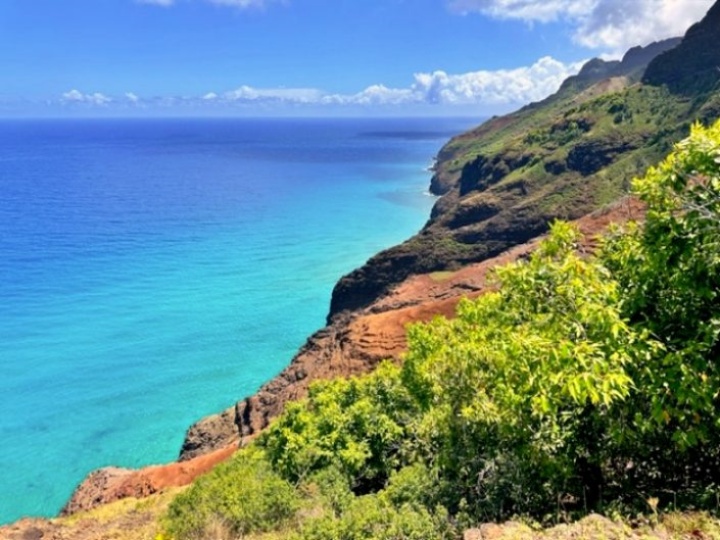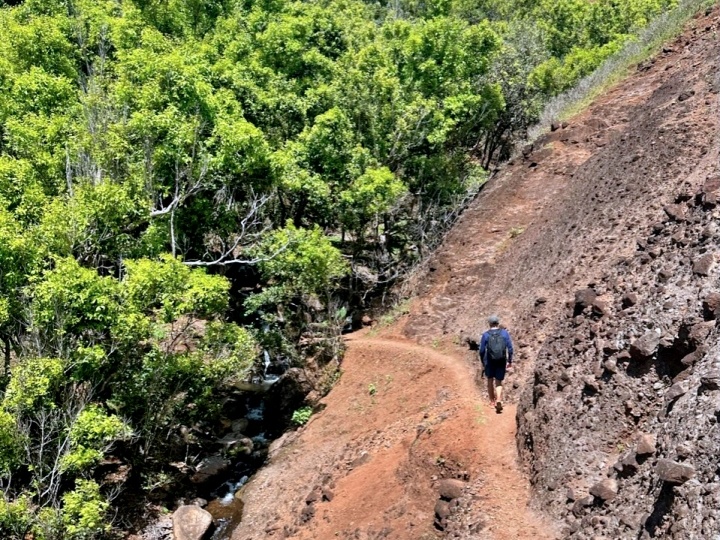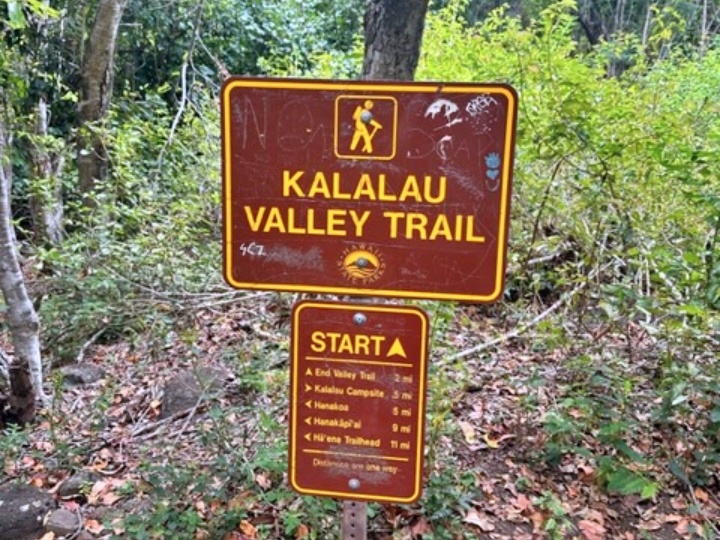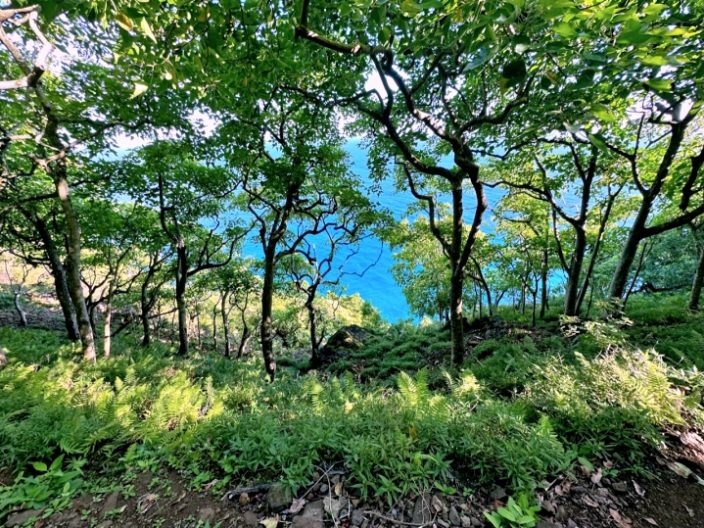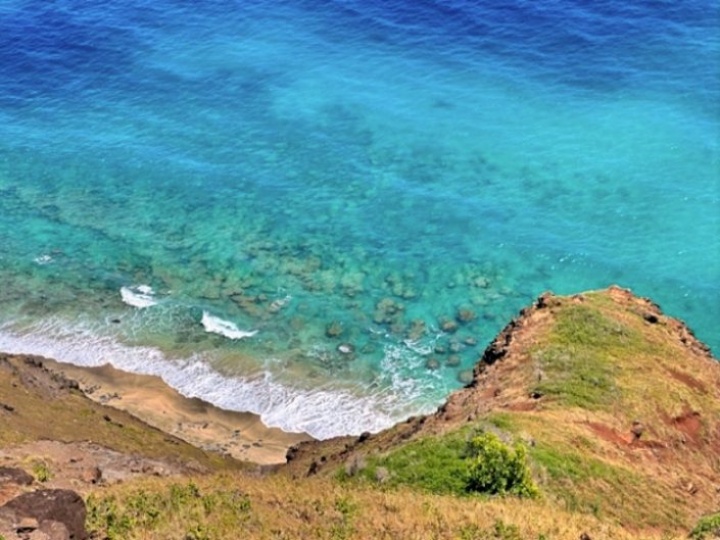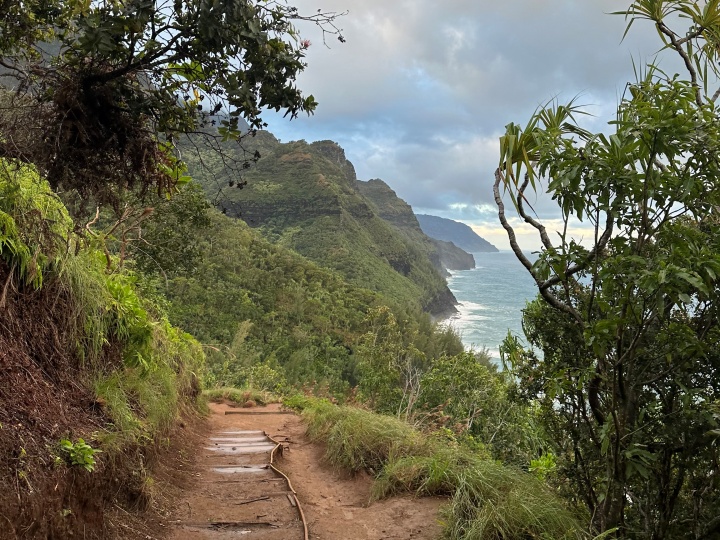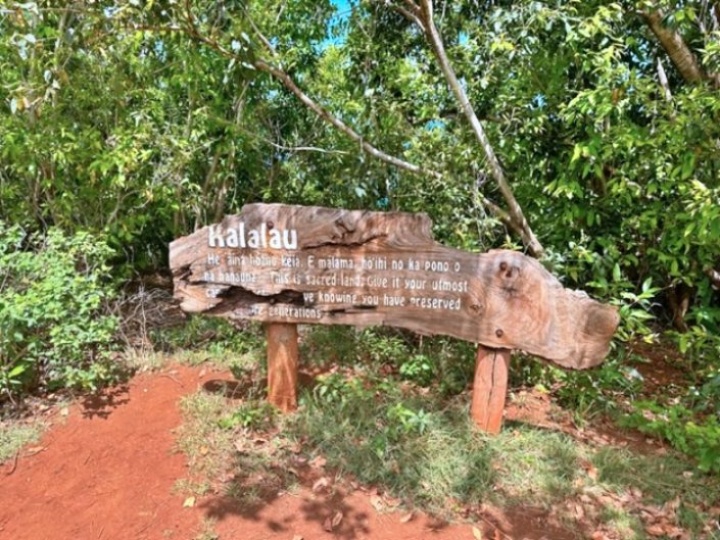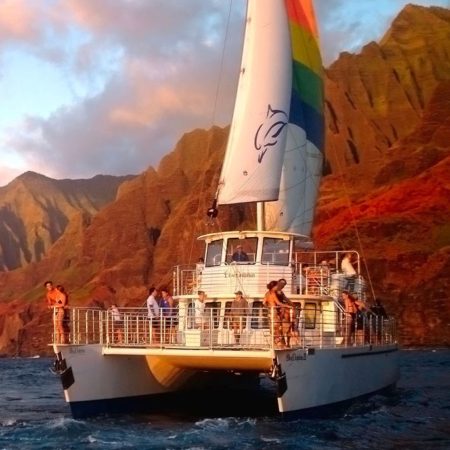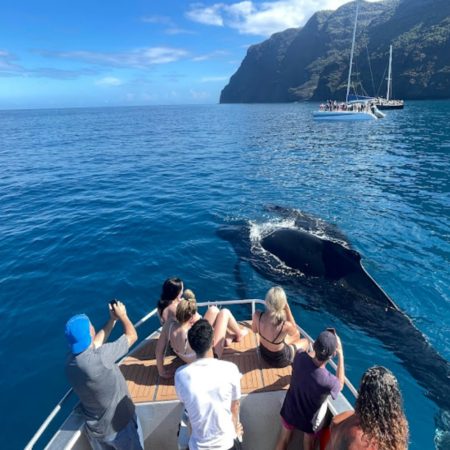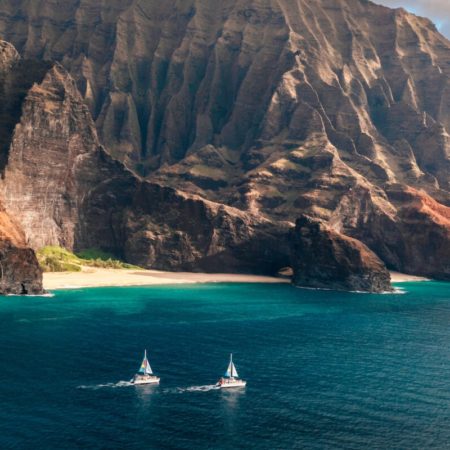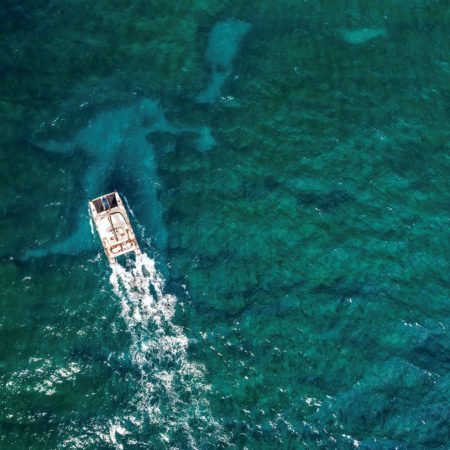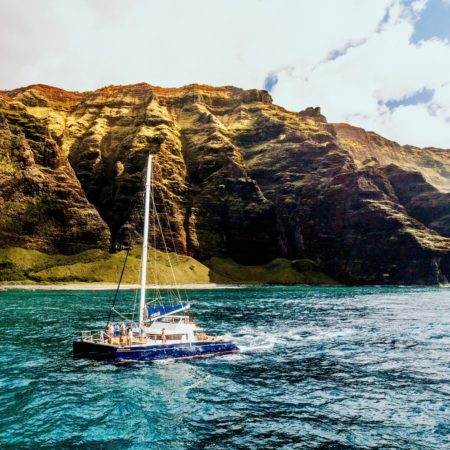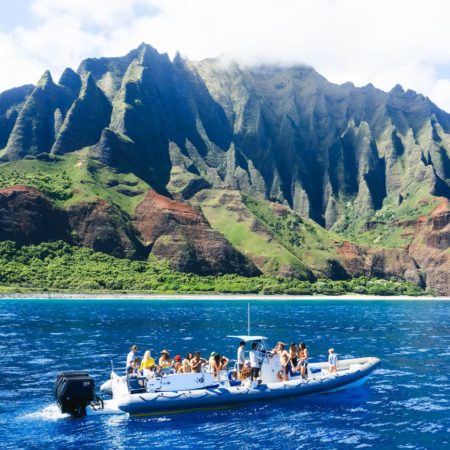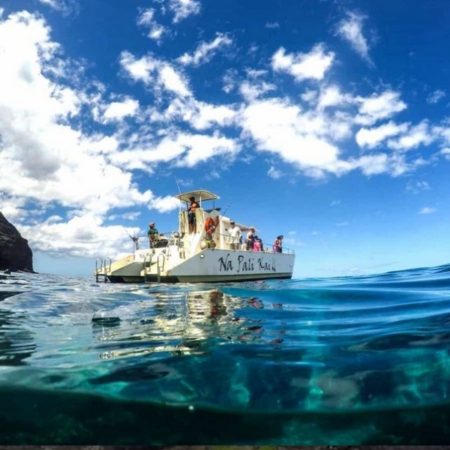Parking at Hāʻena State Park is limited to 100 stalls, so we recommend taking the Kaua’i North Shore Shuttle. Click the link below to buy a transportation ticket which also includes your entry into the park.
Questions? Call at 888-409-2702 during business hours which are 7 AM to 7 PM HST.
*Clicking this link will redirect you to another website
Kalalau Trail is one of the most difficult and challenging hikes on Kauai. Follow in the footsteps of ancient Hawaiians. This 11-mile stretch of coast is the original trail used by the Hawaiians who lived in Kalalau Valley and other valleys along the Napali. The Kalalau Trail provides the only land access to the Napali Coast on Kauai.
Ke’e Beach To Hanakapi’ai (2 Miles) The first two miles of the Kalalau Trail end at Hanakapiai Beach. In the case of high water or heavy rains, do not attempt to cross the river. Hanakapiai Falls and beyond Hanakap’ai are recommended for experienced hikers only. The challenging hike to the falls takes you two miles further into the Hanakapiai Valley, a 120-foot waterfall. Keep in mind that adding the Hanakapiai Falls portion to the trip will make it an eight-mile round trip.
Hanakapi’a to Hanako NOTE: Hiking permits are required to hike beyond Hanakapi’ai Valley.
This portion of the trail becomes strenuous and steep as the trail climbs 800 feet out of Hanakapi’ai valley. The trail traverses the Hono o Na Pali Natural Area Reserve in the hanging valleys of Ho’olulu and Waiahuakua before entering Hanakoa Valley.
Near the Hanakoa Stream crossing, a rest area and facilities, including a composting toilet and two roofed shelters.
The trail crosses the stream well back in the valley. Therefore, there is no shoreline access at Hanakoa. In fact, Hanakoa is a hanging valley without a beach – the stream exhausts itself over cliffs at the ocean’s edge.
For experienced hikers in excellent shape, allow for a long day (8+ hours) to complete the round trip from Ha’ena State Park to Hanakoa. Day hikes beyond Hanakoa are not recommended.
Hanakoa to Kalalau ( 5 miles): The remaining 5 miles after Hanakoa the trail becomes drier and more open with less opportunity for shade. Many parts of the trail are narrow and have steep drop-offs on the ocean side. Use extreme caution. Hike through lush valleys, forge up steep inclines of jagged sea cliffs, cool off in cool mountain streams, and drop back to sea level to Kalalau Beach.
Reconstruction of the trail happened from 1935-1937 and continues to be maintained to fight erosion from weather, feral goats, and wild boar. Remains of lava rock terraces built by the Hawaiians can still be seen today. These terraces in these valleys were used to cultivate the taro plant, a staple in the Hawaiian’s diet similar to that of the potato.
Camping Permits are required for any hiking beyond Hanakapiai Valley.
Hiking Kalalau requires some planning and general conditioning. Within the 5-night maximum, a maximum stay of 5 nights is allowed in Na Pali Coast State Park. No two consecutive nights are allowed at Hanakapiai or Hanakoa. Designated camping areas along the trail do not have tables or drinking water. Composting toilets are available at some of the sites.
Fun Ways To Explore Na Pali Coast
Hanakapi’ai to Hanakoa (4 miles) The stretch of trail beyond Hanakapiai is the gateway to Kalalau, one of the most complex and challenging hikes on Kauai. The rugged and strenuous hiking begins with a switchback and an 800-foot climb out of Hanakapiai Valley. This enchanted hike is famous for its breathtaking beauty, hanging valleys, and iron red and emerald green cliffs that rise thousands of feet above the Pacific Ocean. The trail takes you through the hanging valleys of Ho’olulu and Waiahuakua before entering Hanakoa Valley. Various native lowland forest plants and birds can be seen in this area. After crossing the Hanakoa Stream, you will find a rest area for hikers and backpackers. Facilities include a composting toilet and two roofed shelters. The shelters are set amongst the old taro terraces. The trail crosses the stream deep in the valley, and there is no shoreline access from Hanakoa.
Hanakoa to Kalalau ( 5 miles): The remaining 5 miles after Hanakoa, the trail becomes drier and more open with less opportunity for shade. Many parts of the trail are narrow and have steep drop-offs on the ocean side. Use extreme caution. Hike through lush valleys, forge up steep inclines of jagged sea cliffs, cool off in cool mountain streams, and drop back to sea level to Kalalau Beach.
The trail was rebuilt from 1935 to 1937 and continues to be maintained to fight erosion from weather, feral goats, and wild boar. The remains of lava rock terraces built by the Hawaiians can still be seen today. These terraces in these valleys were used to cultivate the taro plant, a staple in the Hawaiian diet similar to that of the potato.
Camping Permits are required for any hiking beyond Hanakapiai Valley.
Hiking Kalalau requires some planning and general conditioning. Within the 5-night maximum, a maximum stay of 5 nights is allowed in Na Pali Coast State Park. No two consecutive nights are allowed at Hanakapiai or Hanakoa. Designated camping areas along the trail do not have tables or drinking water. Composting toilets are available at some of the sites.
Hanakapi’ai to Hanakoa (4 miles) The stretch of trail beyond Hanakapiai is the gateway to Kalalau, one of the most difficult and challenging hikes on Kauai. The challenging and strenuous hiking begins a switchback and 800 feet climb out of Hanakapiai valley. This is an enchanted hike, famous for its breathtaking beauty, hanging valleys and iron red and emerald green cliffs that rise thousands of feet above the Pacific Ocean. The trail takes you through the hanging valleys of Ho’olulu and Waiahuakua before entering Hanakoa Valley. A variety of native lowland forest plants and birds can be seen in this area. After crossing the Hanakoa Stream you will find a rest area for hikers and backpackers. Facilities include a composting toilet and two roofed shelters. The shelters are set amongst the old taro terraces. The trail crosses the stream deep in the valley and there is no shoreline access from Hanakoa.
Hanakoa to Kalalau ( 5 miles) The remaining 5 miles after Hanakoa the trail becomes drier and more open with less opportunity for shade. Many parts of the trail are narrow and have steep drop offs on the ocean side. Use extreme caution. Hike through lush valleys, forge up steep inclines of jagged sea cliffs, cool off in cool mountain streams and drop back to sea level to Kalalau Beach.
Reconstruction of the trail happened from 1935-1937 and continues to be maintained to fight erosion from weather, feral goats and wild boar. Remains of lava rock terraces built by the Hawaiians can still be seen today. These terraces in these valleys were used to cultivate the taro plant, a staple in the Hawaiians diet similar to that of the potato.
Camping Permits are required for any hiking beyond Hanakapiai Valley
Hiking Kalalau requires a bit of planning and general conditioning. A maximum stay of 5 nights is allowed in Na Pali Coast State Park. Within the 5-night maximum. No two consecutive nights are allowed at Hanakapiai or Hanakoa. Designated camping areas along the trail do not have tables or drinking water. Composting toilets are available at some of the sites.
Hiking Tips
Heading into Kauai’s interior and remote terrain offers dome of the most beautiful backdrops on the world. By doing a little planning and being prepared you will make your hiking trip one of your best Kauai experiences.
- Hiking Plan Always tell someone where you are hiking (name and location of trail) you plan to hike and when you plan on returning.
- Water Drink one-half to one full quart of water or sports drink each and every hour you are hiking in the heat. Carry your water bottle in your hand and drink small amounts often. Make sure if you are drinking water from any streams or fresh water sources you purify your water with a purifier is certified to filter microbial leptosporosis or giardia (not all do).
- Food Carry high-energy, salty snacks as well as meals. The hike out is much easier when you provide your body with enough calories to support the extreme physical activity you are engaged in.
- Weather Check the weather before you set off on your hike. Kauai Weather Forecast
- First Aid It is important to know that cuts in tropical climates should be monitored closely. Don not expose open wounds or cuts to river water.
- Proper Footwear There are a variety of footwear options to choose from. The best advise is to wear what is comfortable for you. Do not break in new shoes along a hiking trail.
- Clothing Dress in layers so you can protect your skin from the tropical sun. Wearing a hat, sunglasses and sunscreen is recommended. A light rain jacket is recommended.

